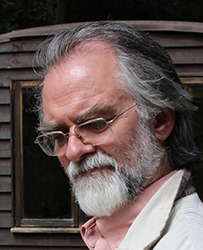For full information about the works mentioned here, see the works pages or follow the links from the titles in the text.
(Auto)biography
If you can’t face reading all this, there’s a short(er) version.
Early life
I was born in Doncaster, South Yorkshire in 1950. My parents’ love of music was mainly expressed through listening to the standard classical repertoire and the odd bit of jazz. My mother did occasionally play the mouth organ and my father made a stab at learning the classical guitar. I was encouraged to take an interest from an early age, although I didn’t receive any formal instrumental tuition until I was about 12, when I began both piano and guitar lessons — and meanwhile discovered pop music.
First recollections of anything like composing: as a child (aged what? five to eight perhaps), sitting in the back on long car journeys, vaguely Bach-like lines twirling through my head.
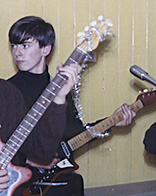
Lurking at the back
I was sent to Oundle, a ‘public school’ (if you’re reading this anywhere outside the UK, a public school is a private school — go figure), which had a very lively music scene, both curricular and otherwise. I continued with piano and guitar lessons, but soon wanted to play young persons’ music, got an electric guitar and formed a throbbing teenage beat combo which played all the current hits by the Beatles, Stones, Kinks, Who, Small Faces, etc., as well as a good deal of 12-bar blues. On one occasion we accompanied Champion Jack Dupree, who visited the school to give a concert. I also got quite nifty at folky acoustic guitar finger picking.
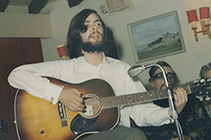
At a folk club somewhere
Apart from instrumental lessons I didn’t pursue music academically at this stage, although I did begin to dabble in a bit of dots on paper composing in spite of having, at this stage, heard almost no 20th century music. The music department, while large and active — thriving school orchestra and all that — was very blinkered in its outlook (in particular the head of department, who actively tried at one time to stamp out the school jazz club, unsuccessfully, I’m happy to say). I left with A levels in maths and physics, quite a lively interest in various non-classical types of music and a fair guitar technique.
A misguided year at Southampton university followed, studying (or rather, not studying) accountancy and statistics. I dropped out after the first year, at which point it dawned on all concerned that my main interest was music, and in particular composing, which I’d started doing more seriously. I took music A level with mediocre results, leading to...
close...
King’s College, London
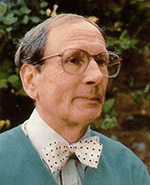
Geoffrey Bush
Photo: Paul Bush
Although I had very little academic grounding, King’s College, London University, who set a lot of store by the aural tests at the interview, gave me an unconditional offer. I attended from 1970 to 1973, resulting in a modest B.Mus. degree. Only a small part of the course was optional composition study, which was what I was really after (otherwise, the course was more for musicologists than for musicians).
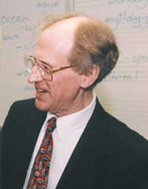
Ian Bent
Photo: Eileen Barroso
My official composition teacher was Dr Geoffrey Bush, a kind and humorous man who invited me to his house on Sunday mornings to discuss my scores then ply me with home made beer. Geoffrey was a wonderfully sympathetic teacher; he was also, however, a relatively traditional — conservative, even — composer, and my interest in more radical ideas was sparked by another of our lecturers, Dr Ian Bent, who opened my young ears and eyes to a side of 20th century music I didn’t know existed. As a result I started exploring serial, aleatoric and other ‘unorthodox’ techniques. I felt I gained equally from the teaching of the two doctors.
Apart from this very valuable start as a composer, I felt by the end of the course (possibly misguidedly) that I’d had enough of academia, so made no attempt to continue towards a further degree, preferring to see what I could do outside the academic world. I did, however, in my final year, compose my first two ‘post-student’ works (as I saw them), and the first to get professional airings: String Quartet no.1 and Sleep.
I got married for the first time at the start of my final year at King’s, to Ruth, but the marriage only lasted about six years.
close...
After King’s
While at King’s I had developed, partly out of discussions with my friend Roger Jeffs, the idea that it should be perfectly possible to produce music with all the best aspects of jazz, rock, ‘classical’ and/or any other combination of genres (‘Third Stream’, anyone?). I even went so far as to write a possibly rather pompous manifesto on the subject (now lost, mercifully).
My first real venture in this direction was to form the band Perfect Stranger which got as far as a very rough recording of Formative Years, the first movement of Life & Times, a planned four-movement piece for the band. Is it a coincidence that the drummer Billy Cobham would use the title Life & Times for an album? Or that one of the musicians I admire most of all, Frank Zappa, should later use the title The Perfect Stranger for the piece commissioned from him by Pierre Boulez for Ensemble Intercontemporain?
Although that band came to nothing at the time (but see below), it led to one of my most ambitious projects, Music for an Imaginary Ballet — a strange story.
close...
Elgar Howarth
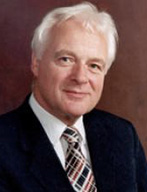
Elgar Howarth
The person who was more helpful to my musical career than anyone else was undoubtedly the late Elgar (Gary) Howarth (1935-2025), whom I met in the early 1970s because of Sleep. He immediately took an interest in my work, maintaining that I was doing something different from anyone else, and gave me great encouragement.
He also introduced me to the world of brass, leading to my Trumpet Concerto, Double Entendre and other works for the Grimethorpe Colliery Band, and later to writing for Messrs Hardenberger and Lindberg (see below). He also encouraged me to make an orchestral version of the Trumpet Concerto which, about forty years later, I have now done! I now regard this as the definitive version of the work.
Over the Christmas period of 1995, Gary asked me to join him and Michael Blake Watkins to form the judging panel for the Royal Philharmonic Society’s annual Composition Prize, which was awarded to Sang-Eun Lee for her O-Zone.
close...
Håkan Hardenberger & Christian Lindberg
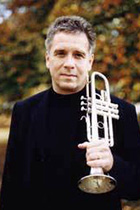
Håkan Hardenberger
Elgar Howarth called me in 1985 with the news that he wanted to record my Trumpet Concerto for broadcast, with a young Swedish trumpet wizard as soloist. This turned out to be the 23-year-old Håkan Hardenberger, who could play my very difficult piece in his sleep.
The performance with the Grimethorpe Colliery Band at the BBC in Manchester was a great success. Afterwards I asked Gary if there was anything for trumpet, trombone and orchestra, and told him about my idea for a piece based on Italo Calvino’s book Invisible Cities. He told me about Håkan’s compatriot Christian Lindberg, and that they had been wanting something to do together. And so it came to pass...
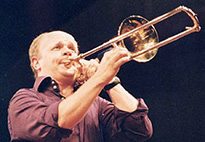
Christian Lindberg
The two soloists excelled themselves at the première of Invisible Cities with the Residentie Orchestra in the Hague, and they subsequently recorded it for broadcast in that same studio in Manchester, this time with Howarth conducting the BBC Philharmonic.
Following this, at the request of Hardenberger and Lindberg, I wrote Son of the Bebop Variations for them to play with tape. They premièred it at the Wigmore Hall in London in 1992 and gave several further performances.
close...
Earning a living
Composing was bringing in no money at all. For a couple of years in the mid-1970s I was a freelance music copyist, back in the days when that stuff was all done by hand, but it was paid by the page and I was much too slow and meticulous, so I needed to get a ‘proper job’ soon enough. There were two curious incidents (and some names to drop) associated with my copying work...
Yehudi Menuhin
I never met the man himself, but his secretary contacted me with a job: to copy out the parts for a previously undiscovered piano quintet by Menuhin’s mentor Georges Enescu. What I was presented with, however, were poor quality blowups of a poor quality microfilm of the composer’s handwritten score, some bits of which (corners of pages and so on) were missing altogether, leaving me with the task of filling in the blanks. I got no complaints.
close...
Luciano Pavarotti & Joan Sutherland
I received a call one morning with an emergency job: I had to rush to Kingsway Hall where a Delibes ballet was due to be recorded that afternoon, but there were no rehearsal numbers in the parts. I was installed in a small room off a side staircase with the necessary materials, and had to get down to it rapidly. Meanwhile, an opera was being recorded in the hall, and come the break, who should suddenly appear in my little room but Pavarotti... to change his shirt... and he was joined shortly afterwards by Dame Joan (who fortunately didn’t change her shirt). I did my best to pretend I wasn’t there.
close...
...and one not associated with my copying work...
Stockhausen
In the early 1970s my wife Ruth worked for Allied Artists, an agency which pioneered the representation of composers, not just performers. As no-one else was doing this at that time they got the cream of the crop, which included Karlheinz Stockhausen. So of course we went to all his London events, one of which was an absolutely riveting lecture recital at Imperial College about his Mantra, a major work for two pianos with electronics, with examples played by Roger Woodward and Jerzy Romaniuk. Now, in my opinion, Stockhausen was asking for trouble with that title and, sure enough, the audience was full of hippies — kaftans, beads and all — and most of the contributions to the Q&A at the end of his very technical lecture were about various more or less spiritual aspects, of which he was clearly tiring. In the course of this I stuck my hand up a few times with questions about the music. All I can recall is that one of them was about the spatial element of the performance — and I can't even remember his answer!
After the event, the Allied Artists people (including me as hanger-on) were waiting in the lobby for the great man to come out. When he did, he made a bee-line straight for me, shook me warmly by the hand and thanked me for asking sensible questions! Chuffed? You could have knocked me down with a feather!
You sometimes hear of people whose eyes bore right into your soul with the intensity of their gaze. Stockhausen was definitely one such. I never met him again, but that encounter left a deep impression.
close...
That ‘proper job’ turned out, as for so many people who don’t know what else to do, to be teaching, even though I had no qualifications for it. At that time (1975), the Inner London Education Authority (ILEA) were sufficiently desperate for teachers of music and maths to decree that anyone who had graduated before the end of 1973 in either of those subjects could just... have a job. My two and a half years of classroom music teaching in Inner London secondary schools are best forgotten: I hated it and was pretty bad at it. During this period I met a number of people who were extremely good at it, and they have my sincere admiration. I came to the conclusion that being a composer first and a teacher second was no good, but I couldn’t make the switch.
In the second school where I attempted to teach, I became friendly with the Media Resources Officer (MRO) and realised that I could do that much better than teaching and would enjoy it more, so from 1978 to 1996, with a couple of years’ gap, I worked as an MRO in two different ILEA secondary schools. This isn’t the place to go into what an MRO does, other than to say that it got me started with using computers.
During this period I settled down with my present wife Mary and moved into our house in Hackney, where we still live.
By the 1990s my job as an MRO had morphed from being genuinely creative to mostly administrative, so I decided I’d had enough. I set up my little web development business Highway 57 which, while no great money-spinner, more or less kept things going until I sold the business and mostly retired in 2012, my one remaining client being Odaline de la Martinez’s Lorelt (Lontano Records Ltd).
Glowing jewellery
Early on in Highway 57’s existence, a curious project came my way. A client for whom I’d done some web programming told me he knew someone who was looking for a reliable programmer and had recommended me, so off I went to a meeting. The programming, as it turned out, could not have been more different from anything I’d so far done. I had to do some very hasty learning (with the help of a friend who has sadly since died) of Assembly language for PIC processors. These are small chips which are embedded in various devices, and have a minuscule amount of memory (a quarter of a ‘k’ — 256 bytes — to hold the program and its variables, if I recall correctly). In this instance, the devices were jewellery, my job being to program the chip to make a light in the piece subtly and gradually change hue. These were no cheap gewgaws you might find at the Sunday market, but really high-end pieces made with gold and diamonds, to be sold for thousands of pounds. It was an interesting challenge and the project lasted about five years but in the end came to nothing, although one of the pieces appeared very fleetingly in a James Bond movie!
close Glowing jewellery...
close Earning a living...
Meanwhile
At some point in the 1970s I switched from guitar to bass guitar (I have always liked the low members of instrument families) and, after hearing Jaco Pastorius, to fretless bass. For a while in the 1980s I had a regular gig with a friend playing a mixture of blues, country and Irish music — not always entirely to my taste, but I gave it my best.
In the 1980s, in my flat in Kilburn, I had a small studio complete with drumkit where I wrote and recorded a number of pop/rock songs. They had, to quote Frank Zappa, ‘no commercial potential’ and most are best forgotten, although there’s a handful I still quite like.
Elgar Howarth’s call telling me that Håkan Hardenberger was going to perform my Trumpet Concerto for broadcast snapped me out of this phase. However, see PsychoYogi below…
close...
Going digital
Having been introduced to the world of the computer as an MRO, I quickly took to it at home for my musical and other activities. In particular I was interested in the possibilities of recording using a sequencer, if only for my own satisfaction (however hideous it may have sounded, it still seemed to me to be preferable to fumbling through my scores on a piano). My first computer was an Oric Atmos (no, most people haven’t heard of it either, but it was a direct competitor — superior in my view — to the Sinclair ZX Spectrum), which didn’t really allow much in the way of recording except for making some interesting bleeping noises (of which I still have samples).
Next came a Commodore 64 and, as I sit writing this on a Macintosh with 32 GB of memory and terabytes of hard drive space, I am utterly astounded at the amount I was able to do with just 64k of memory (a 500,000th of what I have now), using Steinberg’s Pro-16 sequencer, as we used to call them before they became DAWs (digital audio workstations). This really gave me the bug, and I soon progressed to an Atari ST — the first (and as far as I know only) computer with MIDI ports built in. I did a fair amount of recording using Hybrid Arts’ SMPTETrack sequencer but at this stage all the sounds were entirely synthesized, using external hardware synthesizers — and cheap ones at that. (I believe that, to this day, SMPTETrack on the Atari ST is still regarded as the sequencer with the most rock-solid timing.)
I also got the programming bug and with my friend Laurence Glazier I created a program (as we used to call them before they became applications or apps) called Fractal Music. It was also on the Atari, using a combination of SMPTETrack and my Fractal Music, that I produced the raw material for my ongoing project, Hall of Mirrors. One movement of this (the last of five), as a work for chamber orchestra, is now complete, with the other four to follow, er, in due course.
Then, around 1990, came the first of a long line of Macs. Apart from recording, this gave me the power to produce scores digitally for the first time, which was a huge improvement over my hand-written efforts (although I had been complimented on those), and I’ve been a staunch user of Finale ever since. In 1992–3 I developed NotaFile, an equivalent of the standard MIDI file for transferring music notation between different software packages. It wasn’t taken up, but I’ve included it here as a historical curiosity.
Since then, as computing power has steadily increased, so has the quality of affordable software instruments, and therefore the ability to make decent recordings. I now feel I can make recordings that are fit for public consumption, so I am working through the pieces that are unperformed, have only received inaccurate performances, have been performed but not recorded, or have been both performed and recorded but where I do not have permission to air the recordings publicly. You’ll find my MIDI recordings (and one ‘real’ one as well as a few bits of others) on the pages for the works concerned, and on the listen page, with full details of the software used — my DAW of choice these days being MOTU Digital Performer.
close...
PsychoYogi
A few years ago I saw a friend playing in a covers band in a local bar and thought it looked like fun. So I dug my trusty Guild B301F fretless bass out of the cupboard… and discovered it had gone mouldy! And the electronics didn’t work. (It had spent several years in its case in a corner I didn’t realise was damp.) So I had it cleaned up and refurbished and got practising.
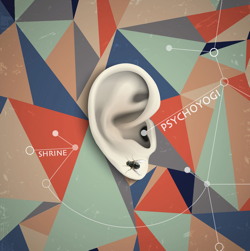
PsychoYogi: Shrine
I looked from time to time at the Bass Player Wanted ads in Gumtree, hoping to find something where age didn’t matter and that might be relatively undemanding. I auditioned for a band doing ‘classic rock’, but that didn’t work out, at which I was quite relieved. Then in spring 2015 I was scanning the ads again and the name Zappa leaped out at me. Hmm, a Zappa tribute or covers band? — that would definitely be fun, and not without its challenges. But no, this was original material, with Zappa cited among various influences including King Crimson, Grateful Dead, Mahavishnu Orchestra… and Bartók, Messiaen, Stravinsky… This was definitely something to investigate.
So now, here I am in Chris Ramsing’s PsychoYogi, having a whale of a time — and with an album out. You can catch up on my latest PsychoYogi news on the home page.
close...
Perfect Stranger — the Revival
This is all told in detail on the Perfect Stranger web site, so there’s no need to rehash the whole story here! Suffice to say, it’s now become the most important part of my musical life.
close...
Performances, broadcasts & recordings
- String Quartet no.1 (1973): première tour, finishing at the Purcell Room, London, by the Gaudeamus Quartet in c.1976 (my first ever professional public performance having been in, I believe, Sunderland, followed by Birmingham); BBC Radio 3 broadcast by a young Arditti Quartet in 1979.
- Sleep for 60 solo strings with harp, piano and percussion (1976): SPNM open rehearsal by the RPO under Elgar Howarth at the Guildhall School of Music in 1976.
- Trumpet Concerto (1977): première by James Watson with the Grimethorpe Colliery Band under Elgar Howarth at Kelvin Hall, Glasgow in 1978; BBC Radio 3 broadcast of revised version by Håkan Hardenberger with Grimethorpe and Howarth in 1986; recording of abridged version for Doyen Records’ The History of Brass Band Music, Vol.6: New Adventures by Richard Marshall with Grimethorpe and Howarth in 2005 (DOY CD165).
- Double Entendre for piano and brass band (1985): première by Andrew Ball with the brass students of the Royal Academy of Music under Harold Nash at RAM in 1990; performed by Andrew Ball with Grimethorpe and Howarth at the Barbican, London in 1995; performed by Richard Casey with the brass students of the Royal Northern College of Music under Chris Houlding at RNCM in 1995.
- Bebop for brass quintet (1986): first accurate performance by Fine Arts Brass at Haileybury School in c.1998.
- Invisible Cities for trumpet, trombone and orchestra (1987): première by Håkan Hardenberger and Christian Lindberg with the Residentie Orchestra under Elgar Howarth in The Hague, Netherlands in 1989; BBC Radio 3 broadcast by Hardenberger and Lindberg with the BBC Philharmonic under Howarth in 1989, re-broadcast in 1990.
- Son of the Bebop Variations for trumpet, trombone and tape (1992): première by Håkan Hardenberger and Christian Lindberg at the Wigmore Hall, London in 1992; further performances by Hardenberger and Lindberg include the 1993 Stockholm New Music Festival and Bath International Festival, and the 1997 Huddersfield Contemporary Music Festival.
- Short Change — 30 seconds of music for brass band (1993): premièred by the Grimethorpe Colliery Band under Elgar Howarth at the Queen Elizabeth Hall, London in 1993.
- Be, Bop and Away for solo trumpet with jazz group (1993): first performed by Håkan Hardenberger with studio musicians on a Swedish TV game show; later arranged for brass quintet and rhythm section and performed by Fine Arts Brass and friends at Warwick University in 2003.
- The Europeans — recorded incidental music for Eric Schneider’s production of Howard Barker’s play at the Théâtre d’Esch, Luxembourg in 1995.
- Music from the Heart of a Dog for bass clarinet and pre-recorded sound — from the incidental music for Eric Schneider’s stage adaptation of Mikhail Bulgakov’s novella, also at the Théâtre d’Esch, in 1998, soloist Marcel Lallemang; recorded for NMC Records by Andrew Sparling in 2004 (NMC D092).
- The Bossa Nova Variations for sextet (2008): premièred by Lontano under Odaline de la Martinez at the Purcell Room London in 2008.
- My band Perfect Stranger, mentioned above, released its debut album Unfinished Business in October 2024.
close...
Other works
Some unperformed works not already mentioned:
- lovesongs — seven poems by e e cummings for voice and piano (1974)
- Variations on a Theme of George Harrison for septet (1975)
- Five Pieces for Saxophone Quartet (1975)
- in heaven... for brass band, optional vocalist and tape (1985)
- Nights in Tunisia and Elsewhere — a set of variations for brass band on Dizzy Gillespie’s A Night in Tunisia (1985)
- Various spin-offs from Bebop for brass quintet (1986)
- 60 Minims for trumpet and General MIDI (or tape), a 60th birthday present for Elgar Howarth (1995)
- Cog-Dance for divided orchestra (1997)
- Return of the Son of the Bebop Variations for chamber orchestra with drumkit (2012)
close...
Influences
I have always maintained an interest in ‘popular’ forms of music. Over the years, I have composed, played and recorded everything from orchestral and chamber music to experimental jazz and pop songs and include Zappa, Ellington and the Beatles among my main influences, along with the likes of Bartók, Berio, Birtwistle, Ligeti, Messiaen, Nancarrow, Stravinsky, Varèse and Xenakis. That said, my music doesn’t sound particularly like any of the above.
close...
